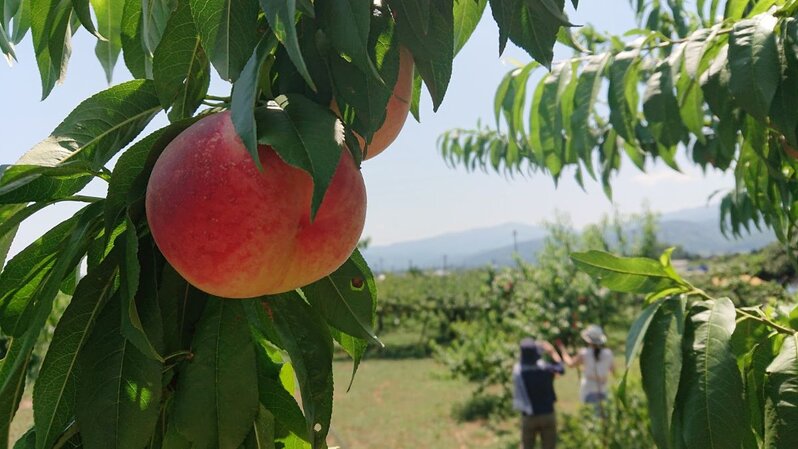Sprawled out from the mountainous interior of northeastern Honshu towards the Pacific coastline, Fukushima is the third largest prefecture in Japan. The place is blessed with a rich and varied landscape, which lends itself to the abundance of produce in the region.

Eryuda waterfall in autumn (Photo by: Fukushima Prefecture Tourism and Local Products Association)
In fact, Fukushima is also known as the 'Fruit Kingdom' because of the wide variety of fruits it produces each year, from peaches and persimmons to apples and grapes. The climate in Fukushima is ideal for cultivating fruits because of the extreme difference in temperatures across the seasons. Winters in Fukushima are freezing cold while summers are hot and blustery; this variance in temperature provides the optimum conditions for growing delicious fruit.

Photo by: Fukushima Prefecture Tourism and Local Products Association
Of all the fruits produced in Fukushima, peaches are probably its most popular export. Fukushima is Japan’s second-largest peach-growing prefecture. Ever since the 2011 nuclear reactor crisis, farmers in Fukushima have also doubled their efforts to prove the attractiveness of their produce, with Furuyama Fruit Farm even striving to produce the world’s sweetest peach.
Of course, you don’t have to fork out USD7,000 for this record-breaking momo. The harvest season for peaches in Fukushima starts in mid-July and stretches till the start of October, which means the entire prefecture is rife with the sweet yield.
Apart from fruits, here are some signature dishes to try when you visit this epicurean paradise:






